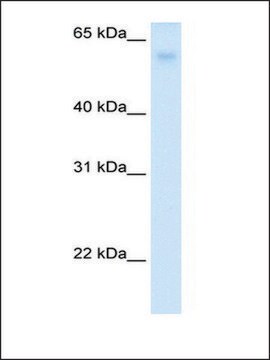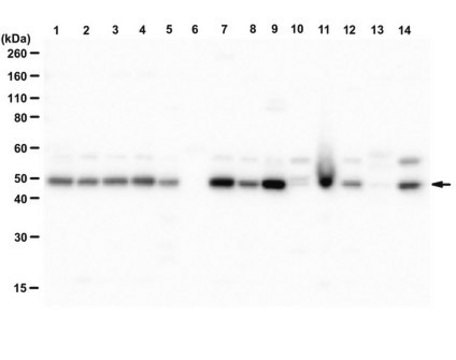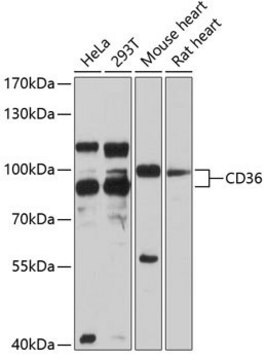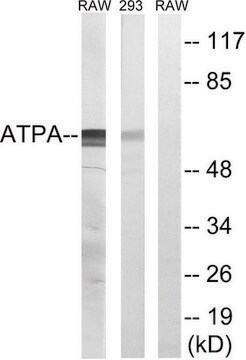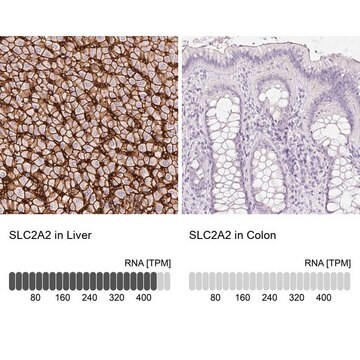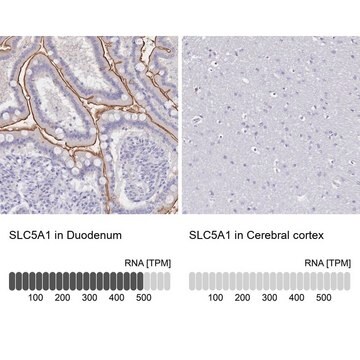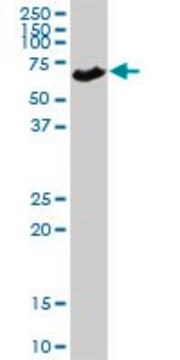07-1417
Anti-SGLT-1 (Sodium Glucose Co-transporter-1) Antibody
serum, from rabbit
Synonim(y):
Sodium/glucose cotransporter 1, Solute carrier family 5 member 1, Solute carrier family 5 (sodium/glucose cotransporter), member 1, Solute carrier family 5 (sodium/glucose transporter),member 1
About This Item
Polecane produkty
pochodzenie biologiczne
rabbit
Poziom jakości
forma przeciwciała
serum
rodzaj przeciwciała
primary antibodies
klon
polyclonal
reaktywność gatunkowa
pig, rat, avian, rabbit, mouse, canine, human, reptile, feline
metody
ELISA: suitable
immunohistochemistry: suitable (paraffin)
western blot: suitable
izotyp
IgG
numer dostępu NCBI
numer dostępu UniProt
Warunki transportu
dry ice
docelowa modyfikacja potranslacyjna
unmodified
informacje o genach
human ... SLC5A1(6523)
Opis ogólny
Specyficzność
Immunogen
Zastosowanie
ELISA: 1:10,000 - 1:50,000 dilution of a previous lot, using 50-100 ng of control peptide/well.
Optimal working dilutions must be determined by end user.
Western Blot: A previous lot of this antibody was used on multiple lysates. See datasheet.
Signaling
Insulin/Energy Signaling
Jakość
Western Blot Analysis:
1:500-1:2,000 dilution of this lot detected SGLT-1 on 10 μg of PC3 lysates.
Opis wartości docelowych
Powiązanie
Postać fizyczna
Przechowywanie i stabilność
Handling Recommendations: Upon first thaw, and prior to removing the cap, centrifuge the vial and gently mix the solution. Aliquot into microcentrifuge tubes and store at -20°C. Avoid repeated freeze/thaw cycles, which may damage IgG and affect product performance.
Komentarz do analizy
PC3 cell lysate
Oświadczenie o zrzeczeniu się odpowiedzialności
Nie możesz znaleźć właściwego produktu?
Wypróbuj nasz Narzędzie selektora produktów.
Kod klasy składowania
10 - Combustible liquids
Klasa zagrożenia wodnego (WGK)
WGK 1
Certyfikaty analizy (CoA)
Poszukaj Certyfikaty analizy (CoA), wpisując numer partii/serii produktów. Numery serii i partii można znaleźć na etykiecie produktu po słowach „seria” lub „partia”.
Masz już ten produkt?
Dokumenty związane z niedawno zakupionymi produktami zostały zamieszczone w Bibliotece dokumentów.
Nasz zespół naukowców ma doświadczenie we wszystkich obszarach badań, w tym w naukach przyrodniczych, materiałoznawstwie, syntezie chemicznej, chromatografii, analityce i wielu innych dziedzinach.
Skontaktuj się z zespołem ds. pomocy technicznej